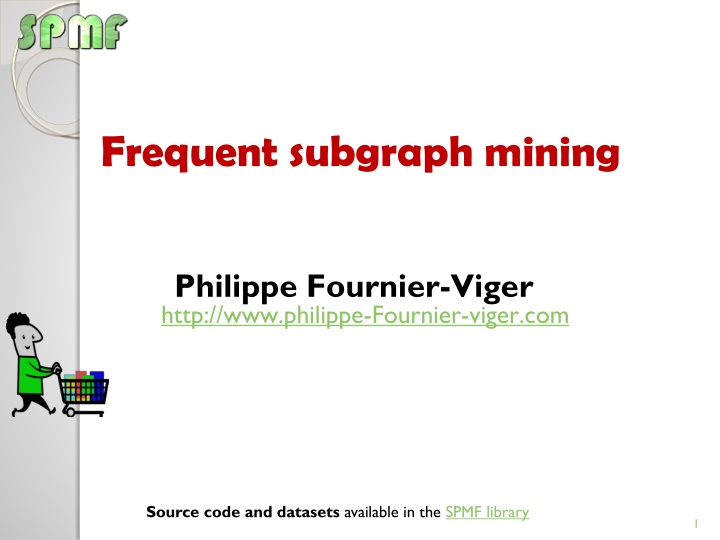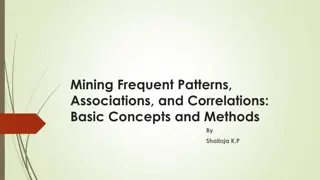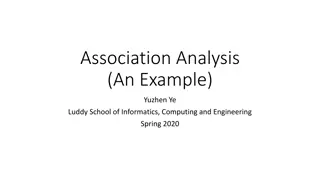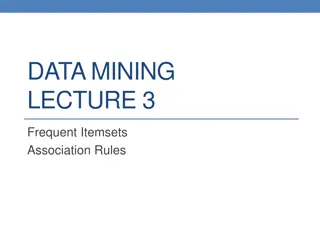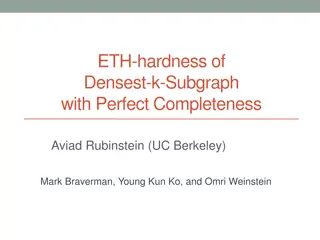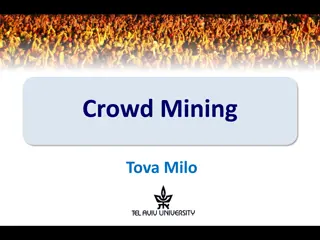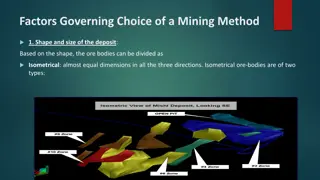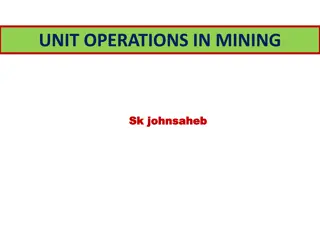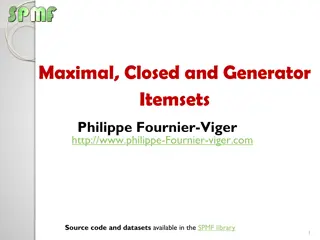Frequent subgraph mining
In this overview, we delve into various aspects of frequent subgraph mining, discussing types of graphs, analyzing graphs for data mining tasks, input-output processes, and the goal of discovering repeated subgraphs in graph databases.
Uploaded on Feb 19, 2025 | 1 Views
Download Presentation

Please find below an Image/Link to download the presentation.
The content on the website is provided AS IS for your information and personal use only. It may not be sold, licensed, or shared on other websites without obtaining consent from the author.If you encounter any issues during the download, it is possible that the publisher has removed the file from their server.
You are allowed to download the files provided on this website for personal or commercial use, subject to the condition that they are used lawfully. All files are the property of their respective owners.
The content on the website is provided AS IS for your information and personal use only. It may not be sold, licensed, or shared on other websites without obtaining consent from the author.
E N D
Presentation Transcript
Frequent subgraph mining Philippe Fournier-Viger http://www.philippe-Fournier-viger.com Source code and datasets available in the SPMF library 1
Frequent subgraph mining A graph ( ) is a set of vertices ( ) and edges ( ) e.g. This graph has four vertices (in yellow color). Each vertices has a label (10 or 11) that may not be unique. This graph has five edges (black lines) Each edge has a label (20,21,22, 23) that may not be unique.
Types of graphs connected graph: by following the edges, it is possible to go from any vertex to any other vertices disconnected graph: a graph that is not a connected graph e.g. a graph where it is possible to go from any city to any other cities by following the roads. This graph is disconnected because Vertex A cannot be reached from the other vertices by following the edges 3
Types of graphs undirected graph ( directed graph ( ): edges are bidirectional ): edges are unidirectional A real-life example: graphs where vertices are cities and edges are road some roads are one-way while others are bidirectional 4
Analyzing graphs Many data mining tasks on graphs: detecting communities, predicting friendship links, detecting influence between users, etc. what is our goal? what kind of data ? single graph? multiple graphs? directed graphs? etc. Frequent subgraph mining: discover interesting subgraph(s) appearing often in a set of graphs (a graph database) 5
Frequent subgraph mining Input: a graph database (a set of graphs) a minimum support threshold (minsup). Example: minsup = 3 6
Output: all subgraphs appearing in a least minsup graphs. minsup = 3 7
Output: all subgraphs appearing in a least minsup graphs. minsup = 3 This subgraph has a support of 3 8
Frequent subgraph mining with a single graph A variation of the previous problem. We want to find frequent subgraphs in a single large graph. The support of a subgraph is the number of times that it appears in the single input graph 9
Frequent subgraph mining with a single graph minsup = 2 10
Frequent subgraph mining with a single graph minsup = 2 This subgraph has a support of 2 11
Algorithms for subgraph mining Several algorithms: FFSM, GSPAN, Gaston, etc. The same algorithm can usually be applied on a single graph or multiple graphs. Other variations: finding frequent paths finding frequent trees finding closed/maximal subgraphs 12
Performance comparison Authors of data mining papers often do not compare their algorithms with the best ones published until now. Frequent subgraph mining (before 2014) 2001 2004 2004 2003 2002 2003 2006 2007 2011 2008 Legend: arrow X Y from an algorithm X to an algorithm Y indicates that X was shown to be a better algorithm than Y in terms of execution time by the authors of X in an aexperiment. 13
